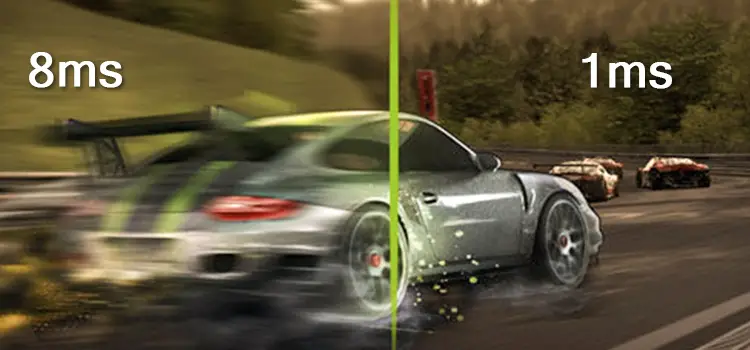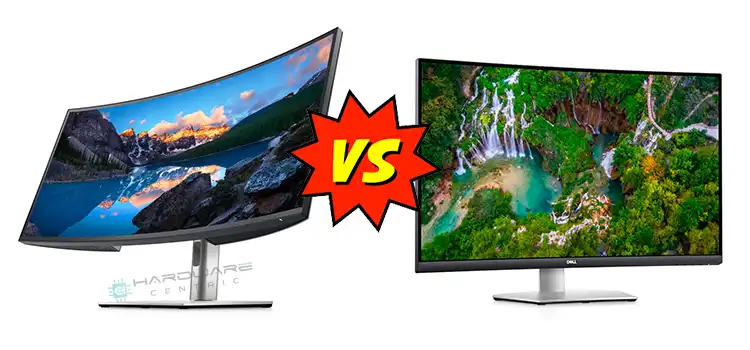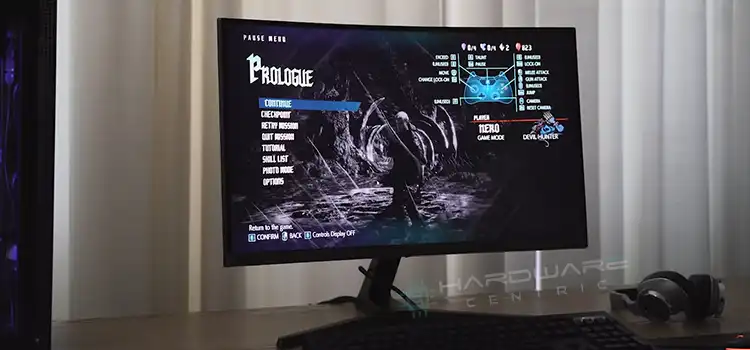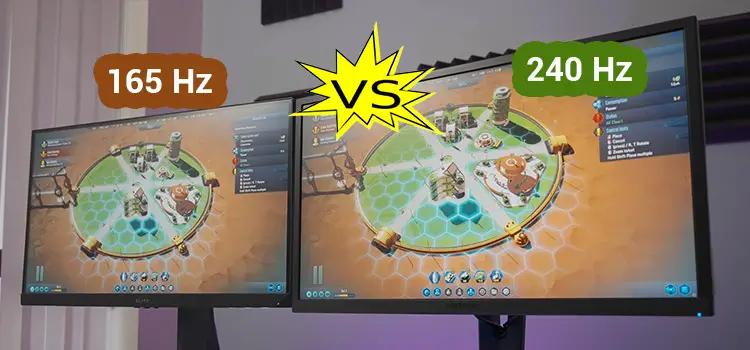1ms vs 8ms Response Time | Isn’t 1ms a Quick Response Time?
The response is the amount of time it takes for a monitor or panel to change the properties of each pixel. The time it takes to shift from black to white and back to black is what determines it. It may alternatively be quantified as a black-to-white transition or a Grey-to-Grey transition.

1ms vs 8ms Response Time
To determine the differences between 1ms and 8ms response time, read the comparison table below carefully first –
| 1 ms Response Time | 8 ms Response Time |
| It takes 1 millisecond to draw the pixel on each frame. | It takes 8 milliseconds to draw the pixel on each frame. |
| Errors on the display with a 1ms response time are hard to detect by the human eye. | Errors on the display with an 8ms response time can be detected by the human eye. You can easily detect blurred images. |
| The display with a 1ms response time updates colors, images, and image pixels at the same time | The display with an 8ms response time is eight times slower than the display with a 1ms response time. |
| A display with a 1ms response time can achieve up to 240Hz refresh rate. | A display with an 8ms response time can achieve a 60Hz to 144Hz refresh rate. |
| The display with a 1ms response time is excellent for gaming, especially for FPS games. | The display with an 8ms response time isn’t considered good for gaming as gamers might face blurry images and ghosting. |
Zero will never be achieved with existing technology. If you’re a gamer or a display user, it all starts at 1ms. Consider using a display with a 1ms reaction time to play a first-person shooter. You use the turn-left button to control your automobile. Your display must update the image you view after receiving this information from your computer or console.
On an 8ms display, this exercise will take eight times longer to complete than on a 1ms monitor. Of course, you won’t notice much of a change because everything happens in milliseconds. However, if you’re a committed gamer, every second counts because games are designed to be responsive. Reaction time is what causes lags, delays, and smooth runs.
Almost every TN panel now has a 1ms response time. They are the only ones that can support 240Hz refresh rates as a result. VA and IPS panels, on the other hand, often take 2–8 milliseconds to respond while giving significantly better colors and viewing angles.
A 1ms TN panel does the least pixel processing of the three basic panel types. This explains why they travel at such a fast rate. The primary goal of VA and IPS panels with an 8ms reaction time is to improve color reproduction.
Frequently Asked Questions
Is 8ms a Good Response Time?
Almost all the modern monitors now have a short response time, and 8ms response time can also be considered a short response delay. It is good for all purposes including light-gaming. However, 8ms isn’t good for professional gaming as it should be less than 4ms.
Is 5ms Better than 8ms?
The response delay of 5ms is 5 milliseconds and 8ms is 8 milliseconds. Except this, there is no difference between 5ms and 8ms response time. If you are being said the 5ms is better than 8ms then you have completely been misled. However, if you are a professional gamer, then you should prefer 5ms rather than going for an 8ms display.
Is 8ms CPU Time Bad?
Not at all. 8ms is CPU has no effect on the actual response time of the monitor. Again, 8ms can be considered a lower delay which is actually good.
Conclusion
When comparing 1ms against 8ms, the result is negative, since 1ms monitors are eight times faster than 8ms displays in changing the colors of the pixels. When we talk about 8ms reaction time, we’re talking about a pixel that changes color every 0.008 seconds and can operate at 125 Hz. Every gaming PC operates at a frequency of 60 to 120 Hz on average. According to that example, 125 Hz exceeds the maximum limit, and you won’t notice any blurring or delays in reaction. As a result, running your games at 8ms should not be a problem.
Subscribe to our newsletter
& plug into
the world of PC Hardwares
![[Fix] Monitor Shuts off but Computer Stays On (100% Working)](https://www.hardwarecentric.com/wp-content/uploads/2022/12/Monitor-Shuts-off-but-Computer-Stays-On.jpg)



![[Fix] 144 Hz and 60 Hz Dual Monitor Issues (100% Working)](https://www.hardwarecentric.com/wp-content/uploads/2021/10/144-Hz-and-60-Hz-Dual-Monitor-Fix.jpg)
![[Troubleshooting] Acer Black Screen No BIOS: Display Error](https://www.hardwarecentric.com/wp-content/uploads/2023/10/Acer-Black-Screen-No-BIOS.webp)
